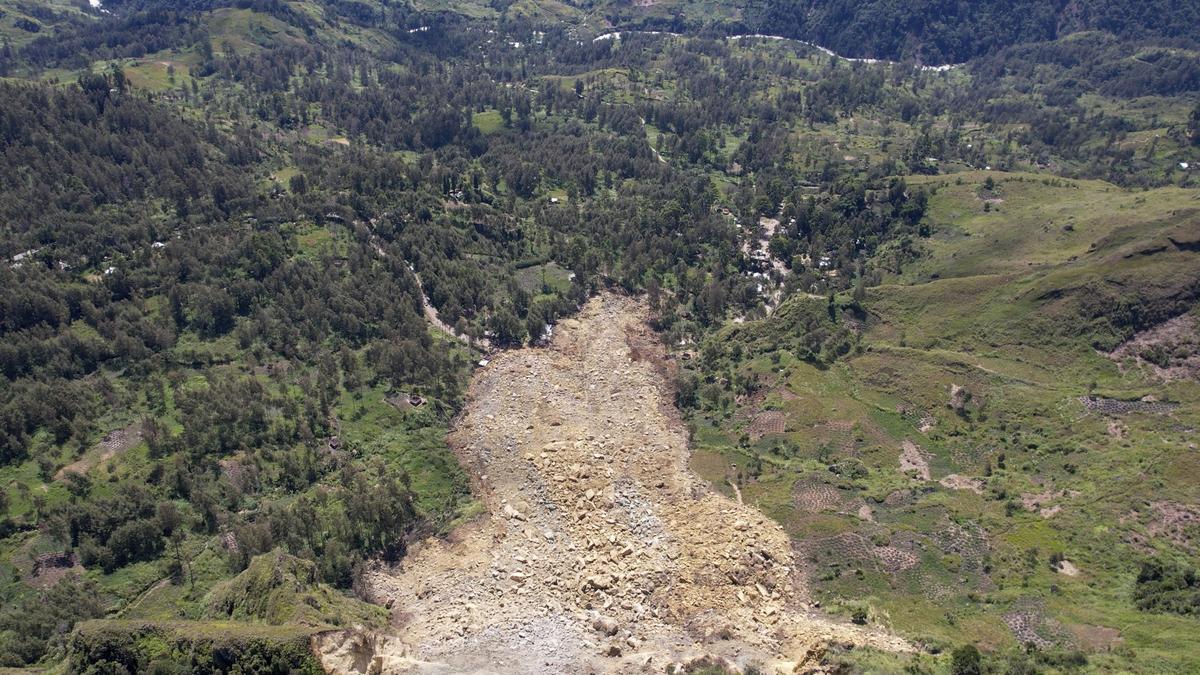
Papua New Guinea's prime minister visits the site of a landslide estimated to have killed hundreds
The Hindu
The United Nations estimates that 670 villagers died in the disaster, which immediately displaced 1,650 survivors. Papua New Guinea’s government has told the United Nations it thinks more than 2,000 people were buried.
Papua New Guinea's prime minister on May 31 visited the site of a major landslide, which is estimated to have buried hundreds of villagers in the South Pacific island nation's mountainous interior a week ago and left the ground too unstable for heavy earthmoving machines to help clear up the mess.
James Marape told hundreds who had gathered near the devastated Yambali village that the list of governments and world leaders who had sent their condolences included the United States, China, India, France, Malaysia and the Czech Republic. First on the list was U.K. King Charles III, Papua New Guinea's constitutional head of state.
“My people are simple people. I want to say thank you for them to the global friends of PNG,” Mr. Marape said.
The first mechanized excavator arrived at the scene on Sunday, but it hasn't been permitted to start removing the boulders, rocks and splintered trees that have buried a 150-to-200-meter (500-to-650-foot) stretch of the Enga province's main highway.
The nation's military had expected up to 10 excavators and bulldozers to be on the scene this week to help villagers who have used spades and farming tools to painstakingly retrieve bodies from the rubble, but have so far only found seven.
The United Nations estimates that 670 villagers died in the disaster, which immediately displaced 1,650 survivors. Papua New Guinea's government has told the United Nations it thinks more than 2,000 people were buried.
Mr. Marape said that geotechnical reports in recent days found the area remains unstable.

“Writing, in general, is a very solitary process,” says Yauvanika Chopra, Associate Director at The New India Foundation (NIF), which, earlier this year, announced the 12th edition of its NIF Book Fellowships for research and scholarship about Indian history after Independence. While authors, in general, are built for it, it can still get very lonely, says Chopra, pointing out that the fellowship’s community support is as valuable as the monetary benefits it offers. “There is a solid community of NIF fellows, trustees, language experts, jury members, all of whom are incredibly competent,” she says. “They really help make authors feel supported from manuscript to publication, so you never feel like you’re struggling through isolation.”

Several principals of government and private schools in Delhi on Tuesday said the Directorate of Education (DoE) circular from a day earlier, directing schools to conduct classes in ‘hybrid’ mode, had caused confusion regarding day-to-day operations as they did not know how many students would return to school from Wednesday and how would teachers instruct in two modes — online and in person — at once. The DoE circular on Monday had also stated that the option to “exercise online mode of education, wherever available, shall vest with the students and their guardians”. Several schoolteachers also expressed confusion regarding the DoE order. A government schoolteacher said he was unsure of how to cope with the resumption of physical classes, given that the order directing government offices to ensure that 50% of the employees work from home is still in place. On Monday, the Commission for Air Quality Management in the National Capital Region and Adjoining Areas (CAQM) had, on the orders of the Supreme Court, directed schools in Delhi-NCR to shift classes to the hybrid mode, following which the DoE had issued the circular. The court had urged the Centre’s pollution watchdog to consider restarting physical classes due to many students missing out on the mid-day meals and lacking the necessary means to attend classes online. The CAQM had, on November 20, asked schools in Delhi-NCR to shift to the online mode of teaching.









